Layered clothing system is the norm when it comes to hiking, mountaineering and similar activities. Wearing multiple layers enables you to add or shed layers according to the conditions like changes in temperature, precipitation, wind and your activity level. The base layer is probably the most important part of the layered clothing system because it is in direct contact with the skin. You can wear mid- and outer layers of the highest quality, but if you are wearing a poorly-performing base layer, you won’t be comfortable. Here is a detailed analysis of base layer materials.
If you want to share your thoughts on base layer materials, drop us a line in the comments below.
If you want to learn more about clothing materials check out our articles Comparison of mid-Layer Materials and Comparison of Shell Materials as well.
What does the base layer do?
Manages moisture
The thermal conductivity of water is approximately 25 times higher than the thermal conductivity of air, and when wet you therefore lose heat much faster than when dry. Wet clothing also has a higher coefficient of friction, which can cause discomfort due to chafing etc. For that reason, moisture, whether originating from the body (perspiration) or from the outside (precipitation), has to be wicked to the outside of the garment where it can evaporate or pass to the next layer in order to keep your skin dry.
Protects the skin
In case that you are solely wearing a base layer (in warm weather) it should provide protection against the sun (UV protection), potential chafing from a backpack and vegetation. To learn more about sun protective clothing, read our article Sun Protective Clothing for Hiking.
Maintains body’s natural temperature
In cold weather, the base layer has to reduce the speed at which you lose your body heat. As soon as the body thermal balance is lost, you will feel thermal discomfort; sweating in warm weather or freezing in cold weather. It is, unfortunately, impossible to make a base layer that performs excellent both in very cold and in very warm conditions as this requires different thickness of the material. However, high-quality base layers are suitable for wide range of conditions.
Base Layers – What characteristics to look for?
Moisture-wicking
As explained above, wet skin or a high content of moisture between the skin and the base layer garment results in high thermal conductivity which leads to a quicker change in the body’s temperature towards that of the surrounding environment. In order to help your skin stay dry, a base layer has to wick moisture to the outside of the fabric where it will spread out flat in order to easier evaporate. The moisture-wicking properties of a fabric are highly dependent on the hydrophobicity of the fibers (how much water do they absorb) as well as the thickness and porosity of the fabric. The more water-absorbing and thick the fabric, the worse are the moisture-wicking properties. Therefore, manufacturers often manipulate the fibers in fabrics to achieve the best results possible.
Quick Drying
Hiking and mountaineering consist of periods of high intensity activity (going uphill) followed by periods of low intensity activity (going downhill) or rest. During the high intensity activity, perspiration increases which can make the base layer soaked with sweat. The increased thermal conductivity of the base layer will then lead to rapid cooling during rest or low intensity activity in cold weather – unless the base layer is quick to dry or is made of a fabric which retains body heat even when wet (for example Merino wool and silk). The drying time of a garment greatly depends on the thickness of the fabric and water absorbency of the fibers it is made of. Merino wool, for example, absorbs approximately 30% of its own weight in moisture but it doesn’t feel clammy against the skin as the water is absorbed only by the inner part of each fiber while the outer part which is directly in contact with the skin is hydrophobic (water repellant). Therefore, Merino wool offers superior performance in retaining warmth in comparison to polyester for example, although the natural fiber dries slower because the increase in thermal conductivity is limited.
Comfortable against the skin
As base layers are worn directly on your bare skin, they should be made of a material that is pleasant to the touch. When choosing the most pleasant/comfortable material for a base layer, it all comes down to preference – a bit like choosing bed linen, where some prefer crispy cotton and others sillky satin.
Odor-resistance
Odor-resistant base layers can be worn for days without washing and therefore they come in handy on longer hiking trips where you will want to reduce the overall weight that you’ll be carrying by taking fewer garments with you. Some materials like for example Merino wool and silk are naturally odor-resistant, while others like polyester can be treated in order to provide odor-resistance. The most popular anti-odor textile treatments for synthetic fabrics include silver-based compounds and treatment with triclosan and triclocarban. All these substances are toxic to odor-causing bacteria and thus keep your clothes fresh after days of use. However, in time these substances get washed out and thus the garment’s odor resistance decreases. Some reports state that up to 45% of silver-based anti-odor compounds get flushed in just one wash, but of course this depends on overall quality of the garment.
Most Common Materials in Base Layers and Comparison
Most common materials in base layers for hiking, mountaineering and other outdoor activities are:
- Polyester
- Merino Wool
- Nylon
- Cotton
- Silk
Below are the basic characteristics of the most common materials used in base layer clothing. Please note that these characteristics also greatly depend on the thickness and porosity of the fabric – a very thick and dense fabric will for example take much longer to dry than a thinner and more porous one of the same material.
| Characteristic/Fabric | Polyester | Merino Wool | Nylon | Cotton | Silk |
|---|---|---|---|---|---|
| Breathability | Decent | Excellent | Poor | Excellent | Decent |
| Water absorption performance | Excellent (Absorbs up to 0.4% of its own weight in water | Decent (Absorbs up to 33% of its own weight in water) | Excellent (Absorbs more than Polyester but lees than Merino wool) | Poor (Absorbs up to 2500% of its own weight in water) | Decent (Absorbs up to 30% of its own weight in water) |
| Durability | Good | Decent | Excellent | Good | Excellent |
| Moisture-wicking performance | Excellent | Good | Excellent | Poor | Good |
| Drying time | Excellent | Decent | Excellent | Poor | Excellent |
| Weight | Excellent | Decent | Excellent | Decent | Excellent |
| Feels | Synthetic | Soft, non itchy | Synthetic | Soft, non itchy | Soft non itchy |
| Warmth when wet | Poor | Excellent | Poor | Poor | Good |
| Odor-resistance | Poor | Excellent | Poor | Decent | Good |
| Non-allergenic | No | Yes | No | Hypoallergenic | Hypoallergenic |
| Price | Excellent | Decent | Excellent | Excellent | Poor |
Our Advice on Base Layer Thickness:
We recommend wearing thin base layers and compensating insulation with a mid-layer rather going for thick insulated base layer. Thin base layers are more breathable, dry faster and wick moisture away from the skin more efficiently.
More about Base Layer Materials
Polyester
Source: Synthetic – Oil
Typically used for:
- Base Layers
- Mid-Layers
- Pants
Polyester is the most widely used fiber for base-layer clothing as it is relatively inexpensive and offers great performance in certain aspects – not least because the fibers can be knit into a very lightweight fabric that is still durable. Polyester absorbs only around 0.4% of its own weight in water and thus dries very fast, while also efficiently wicks moisture away from the skin. Manufacturers often manipulate polyester fibers in order to increase its performance. Examples of popular polyester base layer fabrics which were created by manipulating the fibers are Arcteryx Phase and Polartec Power Dry. Both fabrics use a bi-component structure which includes two different types of yarn; the inner yarn which picks up the moisture from the skin and the outer yarn that transfers sweat by capillary action to the outside where it can evaporate. However, base layers made of these fabrics are also more expensive than other polyester base layers.
Our Advice on Polyester
We recommend polyester base layer clothing for up to one day long hiking trips in warm weather. On longer trips polyester becomes problematic due to poor odor-resistance and thus requires that you take more pieces of base layer clothing with you. In colder weather Merino wool offers better a performance as it retains warmth even when wet, thus decreasing the conductive heat loss.
Merino Wool
Source: Natural – Sheep
Typically used for:
- Base Layers
- Mid-Layers
- Socks
Merino wool is becoming increasingly popular among hikers as it is naturally antimicrobial and offers superb temperature regulation. Many still think that wool of any kind is only suitable for cold weather, but Merino wool keeps you warm at low temperatures and cool at high temperatures as it simply helps to maintain your natural body temperature around 37⁰C. Merino wool fibers differ from ordinary wool by being less than 24 microns in diameter. The smaller the diameter is, the softer the wool will be. There are 6 different grades of Merino wool:
- 17.5 microns and less – Ultrafine Merino Wool
- 18.5 microns and less – Superfine Merino Wool
- 19.5 microns and less – Extra Fine Merino Wool
- 22.5 microns and less – Medium Merino Wool
- 24 microns and less – Strong Merino Wool
Ultrafine, superfine and extra fine graded Merino wool is suitable for base layer clothing as wool fibers with a bigger diameter tend to be too rough to be worn directly against the skin. Base layers made of Merino wool differ by density of the wool. The density is normally somewhere between 135g/m2 and 400g/m2. Base layers made of wool with a density of 170g/m2 and less are suitable for use at high temperatures while others are mainly intended for winter, spring and fall use. Base layers (as well as mid-layers) made of Merino wool with a density above 250g/m2 tend to be too heavy (especially when soaked with sweat) to be efficiently used for sports. Additionally they offer poor drying performance. In comparison to polyester, the main advantage of Merino wool is that it retains warmth even when wet. This is possible because only the inner part of the fiber absorbs water while the outer part which lies against your skin stays dry. Therefore, Merino wool base layers efficiently eliminate the conductive heat loss. Additionally, they offer much better (and ever-lasting) odor resistance than polyester. However, polyester is lighter and dries faster than Merino wool. Popular brands that offer Merino wool products are Ibex, Icebreaker, SmartWool and Woolx.
Our Advice on Merino Wool
We recommend Merino wool base layers for hiking trips in moderate to cold weather due to their incredible ability to prevent conductive heat loss. We also recommend Merino wool base layers for long hiking trips (no matter the temperatures) where odor-resistant clothing is crucial. On short hiking trips at high temperature you might be better off with a lightweight polyester base layer.
Nylon
Source: Synthetic – Oil
Typically used for:
- Backpacks
- Pants
- Outer-layers
- Base Layers
Nylon is rarely used for base layers due to its poor breathability. Breathability aside, it offers similar performance as polyester; it is moisture-wicking, quick-drying and absorbs very little water. The main advantage of nylon in comparison to other base layer fabrics is its durability. Nylon is extremely durable and thus perfect for clothing that is often exposed to abrasion. Manufactures usually add ventilation panels in the crucial areas of base layers made of nylon. These ventilation panels are made of more breathable and thinner fabrics such as for example polyester and increase the garment’s overall breathability. As nylon is not stretchy it is often blended with Spandex or other stretchy fabrics.
Our Advice on Nylon
We recommend base layers made of nylon for hiking in warm weather (when you are wearing the base layer on its own) and the terrain requires from you to wear durable abrasion-resistant clothing (hiking through woods, shrubbery etc).
Cotton
Source: Natural – Cotton plants
Typically used for:
- Mid-Layers
- Socks
- Pants
- Base Layers
Cotton is rarely used on its own for hiking base layer clothing as it offers poor performance in temperature regulation. Cotton is extremely water absorbent (it can absorb up to 2500% of its own weight in water) and therefore hikers wearing base layers made of cotton regularly experience rapid conductive heat loss in cold conditions. Cotton is also known for being hard to dry and having poor moisture-wicking properties (it rather absorbs the moisture than transfers it away from the skin). You can read more about why you shouldn’t wear (pure) cotton for hiking here. However, some manufacturers use blends of cotton and polyester in base layers for hiking. Here, cotton is added because of its breathability and pleasant feel – it is extremely soft to the touch. In comparison to polyester, cotton also offers better odor-resistance. An example of a good blend of cotton (15%) and polyester (85%) is the drirelease fabric which is comfortable and offers good performance. This fabric is used in many base layers produced by the well-known company ExOfficio.
Our Advice on Cotton
We do not recommend wearing base layers made of pure cotton while hiking. If you prefer the softness of cotton we recommend using base layers made of mixtures of cotton and polyester that offer the best properties of both fabrics. However, avoid cotton in cold weather due to its lack of performance when it comes to temperature regulation.
Silk
Source: Natural – Silkworm
Typically used for:
- Base Layers
Base layers made of silk are rarely used by hikers as the fabric hasn’t yet gained wide popularity. However, silk offers great performance as it is very compact and warm for its weight. Similarly to Merino wool, silk absorbs up to 30% of its own weight in moisture, but as the moisture gets locked away inside its structure it doesn’t feel clammy against the skin. Silk also dries very fast and offers great moisture-wicking performance. It is naturally antimicrobial and feels pleasant against the skin. The only downside of silk is its price. A popular brand which uses silk for base layers is Swedish Klattermusen – their Eir shirt which we reviewed is made of a blend of silk and Merino wool.
Our Advice on Silk
We recommend base layers made of silk to those who are not afraid of trying something new. Silk base layers are suitable for all conditions.
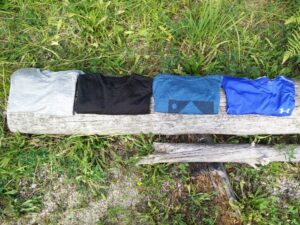
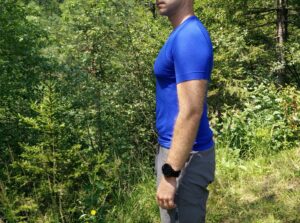
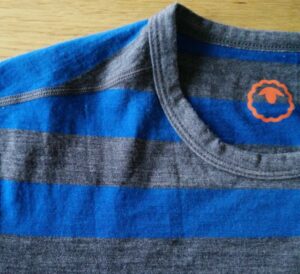
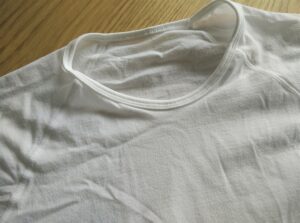
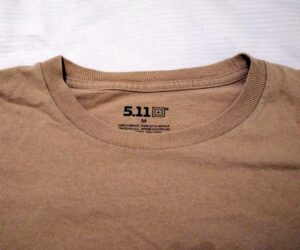
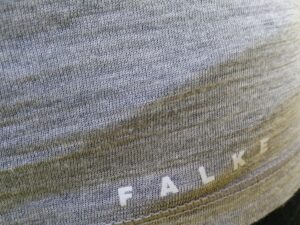

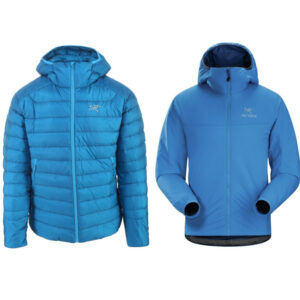
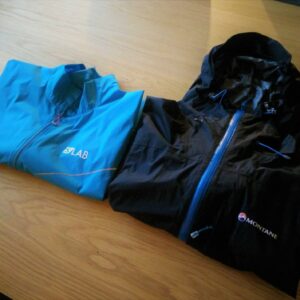
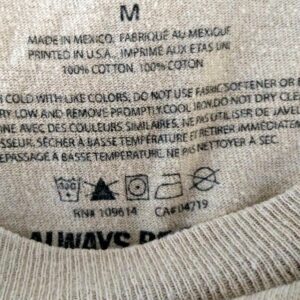
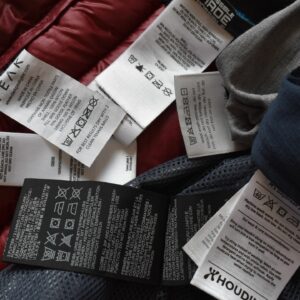
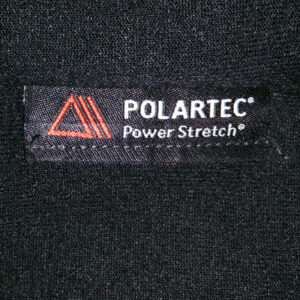

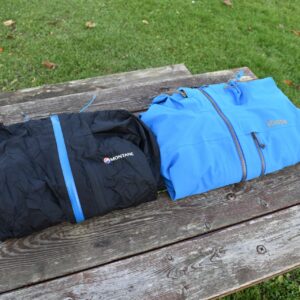
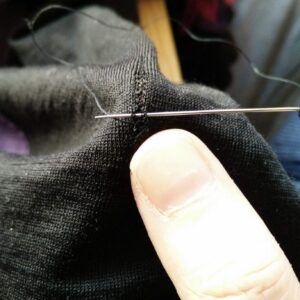
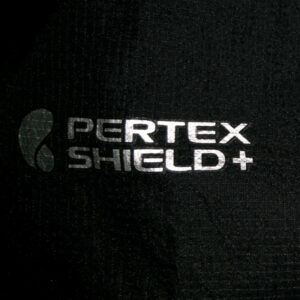











How does bamboo stack up against these?
I’m not so familiar with bamboo but supposedly it is somewhat antibacterial (depends on the processing of the fabric) and pleasant to the touch. However, it is a very absorbent material and therefore it takes long to dry. Many hikers and backpackers also report that it is not very durable and starts tearing fast. I have a pair of socks that are made of bamboo textile but they also utilize nylon and elastane fibers. They have similar characteristics as the Coolmax socks but this might very well be because the content of synthetic fibers is so high. I hope that I get to test a bamboo base layer in the near feature to give more precise information on this.
Are all 100% polyester baselayers moisture wicking? Or does a manufacturer have to do something special with the polyester to make it wick moisture? I ask because I saw a set of 100% polyester thermal baselayers but I could not find any mention of whether they were moisture wicking or not. Thanks, Ken.
Hi Ken,
in my experience not all polyester base layers are equally moisture-wicking. I have several old Under Armour base layers which are not so good at wicking the moisture away from the skin. Polyester is a man-made fiber and therefore its characteristics vary. I guess you can’t know for sure how moisture-wicking the garment is until you try it – or read a review somewhere online 🙂
Sort of agree:
The warmth of all base layers is poor when wet. Perhaps you meant damp in the table? if your base layer is wet you have to wring it out or you can get hypothermia in cold conditions very, very quickly.
How quickly a base layer dries against the skin is the property that should be promoted. Wicking is a pointless measure as most people who are backpacking will sweat enough to quickly overwhelm any fabric whether it wicks fast or wicks slow.
Durability of wool is poor, especially in the fine fibres and low spinweights used for baselayers.
Wool is not warm when wet, it is just less cold – it holds much more water so for really wet conditions (i.e. canyoning, paddling) this can be a hindrance – as anyone who has tried walking in sagging, dripping, wet wool knows.
wool can feel stifling in hot humid conditions but still has many great qualities – wool is the best for odour resistance, by far.
Nylon can be easily made into breathable base layers, I have several, but is more conductive when wet so feels colder. It dries very quickly however, which can be an advantage – good for hot to cool conditions.
Where is polypropylene here? Still a very good fibre for base layers – it absorbs no water, is so light it floats on water and is the cheapest. Downside – smelly and scratchy as it gets older. Cycling mesh baselayers made of polypro are the best layers for aerobic exercise in cold weather as there is more air than baselayer. Nothing to get wet except the hydrophobic mesh.
Hi Sean,
Thanks for sharing your experience with base layer materials and pointing out the things.
I agree, damp would be a much better word in the table above.
I don’t agree that wicking is a pointless measure. I have several old base layers that really are not moisture-wicking, meaning that they don’t pull moisture from my skin. When I pull the base layer off after a workout my skin is completely wet, and this for sure isn’t good in terms of temperature regulation. It’s important that base layer pulls moisture from skin and spreads it across the fabric – this also makes it dry faster.
Yes, durability of wool is not great if it’s not blended with synthetic fibers such as nylon. I wrote a post about this here: https://nailthetrail.com/durability-merino-wool/
Yes, I agree – nothing is warm when wet 😊 However, wet Merino wool does retain more warmth than wet synthetic materials. I think we agree on this 😊
I don’t have experience with polypropylene, and it seems that it’s not that commonly used for hiking clothing. Can you recommend some brands that make polypropylene base layers for hiking? Thanks for sharing your experience with polypropylene base layers.
@Blaz. You can buy polypro from Helly Hansen and, depending which country you’re in, from many camping and sailing shops.
Castelli, a cycling company, makes mesh polypro base layers that are my go to for xc skiing. Mesh is highly regarded – check out Brjne norwegian base layers for reviews of the concept.
Thanks Sean. I’ll check out the brands you mentioned and hopefully I’ll test some polypro base layer soon. I saw Brynje products on an outdoor fair several years ago and I was impressed. Never got to test them though.
How about adding acrylic to your comparison chart? Often acrylic shows up in blends with wool, as in beanies and socks.
Hi Gene! Thanks for your suggestion. I’ll look into it. I know acrylic is quite common in hats, but currently I only have hats made of pure Merino wool 🙂
Thanks so much for this info. I’m a runner and hiker. I grew up in the desert SW and feel I have hot weather all figured out. However, I have been quite challenged to stay comfortable in cold weather. Down to low 30s I am most comfortable with a thin polyester base plus thin merino mid layer, then RS nylon wind breaker as needed. Your info seems to confirm I’m on the right track at least. Thanks again!
I’m a bit surprised that polypropylene was not mentioned in this article.
Hi Morgan,
I’m planning to add a section about polypropylene soon. I like polypro because it absorbs very little moisture and thus dries incredibly fast. I wrote a bit about the material in my Lasting Mars T-shirt review. Nevertheless, polypropylene deserves a separate section here 🙂
Regards,
Blaz
You recommend polyester as a base layer. Since it does not absorb moisture well (in comparison to Merino wool or cotton), where does the perspiration go? (Naturally only direction, going down to the lower part of the body. Correct?) Thank you
Hi Steve,
I’m a big fan of Merino wool, but yes I also wear polyester base layers. Generally speaking, some of the moisture will get pushed through the fabric and some will go down to the lower part of your body or simply stay on your body. Nevertheless, what happens also depends on the fit of the base layer. If it’s tight fit, more of the moisture will get pushed through the fabric. Note that some high-quality polyester base layers have manipulated fibers to provide better moisture-wicking performance.
Blaz
I didn’t see any mention of mesh.
Hi Jeffrey,
Mesh is typically made of one of the materials mentioned above. The advantages of mesh fabric are increased breathability, moisture-wicking performance and quicker drying time.
Regards,
Blaz
How does 37.5 polyester stack up? From the thirtysevenfive website faq:
Wicking fabrics simply spread moisture. Climate control fabrics with 37.5® Technology actually remove moisture vapor before it turns into liquid sweat, so you stay in your comfort zone longer.
Hi Dave,
The 37.5 technology indeed seems very interesting. As I understand, it starts wicking moisture earlier than competitive fabrics because it’s highly porous. Some well-known brands in outdoor industry use this technology. Unfortunately, I haven’t had a chance to test it yet but I’ll share more about it as soon as I get a garment utilizing the technology.
Regards,
Blaz
375 looks to be a fake.
According to a recent study, there is no significant sweat rate difference vs. a pes shirt- though company would love to show that. BUT there should not be sweat according to 375! (Joke…)
And: Company claims they prevent moisture vapour from turning into sweat – funny, goes against basic biology and physics – sweat is released from skin, which may turn into vapour.
Columbia experimented with something similar (different mech), OmniFreeze. It does cool your body a bit if it fits snug, but activated by wetness (sweat).
Dear Blaz,
I wonder what is YOUR definition for breathability, and what you mean by nylon being poor and PES decent in this domain.
Powerdry works exactly the opposite as you describe – inner layer absorbs sweat, by hydrophilic treatment. The second layer transfers sweat by capillary action (this is called wicking, mostly based on surface tension force) – fibre is manipulated to facilitate one-direction movement, though it is fundamentally the water vapour pressure differential, which is at play. The outer is formulated to have as much surface as possible to facilitate evaporation. A similar approach is found with modern waterproof constructions. Drirelease tries to combine hydrophilic and hydrophobic yarns combining and optimizing the advantages – this is widely know as polycotton originally – Powerdry looks way more sophisticated, but I have never tested.
Hi Józsa,
I see there was a mistake describing Powerdry. Thanks for pointing that out and explaining more in-depth how the fabric works. I fixed the mistake in the article now.
Best regards,
Blaz